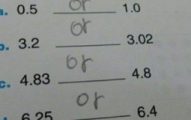Mastering the Synthesis Essay: Blending Ideas for Powerful Writing
Introduction
The synthesis essay stands as a unique challenge. It’s an academic work that asks students to combine very different sources and ideas to create a profound argument. Unlike other essays that focus on a single text or topic, this paper needs many sources to build a nuanced point of view. So, gaining skills in this is the key to success. They will promote critical thinking and analytics ability, which are essential in many areas of life. In this article, we’ll explore the reasons for mastering this type of paper. We’ll do this by offering insights and strategies to help you blend ideas for powerful writing.
What is a Synthesis Essay?
The format of this paper involves mixing different perspectives, ideas, or information from various sources to create a new whole. This essay will typically present a broad theme or question and ask students to develop an argument for it. You can then get the source material from articles, essays, research studies, and visual/multimedia material that relate to the paper’s topic.
Examining the topic in detail and understanding the prompt is vital when writing your synthesis essay. We always recommend breaking this down into key components. You can then target the main themes and recognize the relationships between concepts. This analysis will guide your approach and help you choose how to integrate various sources in the best way.
Exploring Synthesis Essay Strategies
You should begin with this by developing and refining a strong thesis statement. This is essential in any essay but, particularly in this type of paper. Your thesis should show your stance on the issue and give a roadmap to the reader on how you will include information from diverse sources to support your argument. If this is crafted well, it sets the tone for the whole article.
However, before diving into the writing process, you should always annotate your sources in detail. You can do this by taking specific notes on each one’s key arguments, proof, and points of view. This will make it far easier to reference and combine the information as you develop your essay. Also, it’s a good move to include annotations as they help you critically look at each source’s reliability to your thesis. Reputable sources are essential for the merit of your paper.
As a side note, while it’s essential to include a variety of sources to show deep research, you must always look for a balance. We recommend avoiding dependence on one authority or viewpoint. Instead, aim for a good blend of ideas and showcase a nuanced and developed argument that takes on board many perspectives.
When you begin writing, it’s also essential to consider the text’s organization to help keep the reader engaged. So, weigh up different methods to structure it, such as chronological, thematic, or by the source. You should always go for an approach that best suits your argument and allows for a logical flow of ideas. Ultimately, when your paper is organized, it improves readability and helps your audience follow your synthesis.
The Power of Different Writing Techniques
When creating your synthesis essay, it’s best to use a variety of writing techniques for a comprehensive and compelling text.
Firstly, using quotations and citations properly is a key aspect of synthesis writing. So, ensure that your sources are smoothly integrated into your prose and they provide precise citations for each piece of evidence. This enhances your argument and shows your ability to include information to support your claims.
Leading on from this, a good synthesis essay will establish strong connections between sources. So, rather than presenting each one by itself, you should analyze how they relate. You can do this by highlighting common themes, conflicts, or complementary ideas that appear when you consider multiple sources at the same time.
Also, taking on opposite views and dealing with counterarguments ensures your paper is fully developed. Including them will display critical thinking and strengthen your overall argument. So, use evidence to respond to opposing perspectives, and this will show the depth of your analysis. This looks ahead to possible objections to what you’re saying and strengthens your synthesis’s persuasion by showing a clear understanding of the topic.
Editing, Refining, and Proofreading
This is arguably one of the most important areas. During this process, you should focus on the clarity of your paper by ensuring that each paragraph progresses logically. This helps to maintain a clear thread for the argument. Always use transitions correctly to guide your reader through the synthesis of ideas.
The tone and style of your voice should also stay the same while you combine ideas from various sources to show consistency. Go for a balanced manner that’s both academic and engaging. This will create a smooth and clear reading experience for your audience. It’s an approach that changes your synthesis from simply grouping information to a deep topic analysis.
As you approach the final stages of refinement, you should have another look at your thesis and try to boost it. This means making sure that it aligns with your arguments throughout the paper and accurately shows the grouping of ideas you’ve developed. A refined thesis that’s crafted well is a guiding light. It navigates your readers through the complex web of theories you’ve put forward.
Conclusion
This essay requires analytic skills, critical thinking, and effective writing techniques. Understanding these demands and using strategies to mix ideas allows you to create powerful pieces. These pieces will not only achieve things academically but will also make a worthwhile contribution to a topic.
Taking on the challenge of merging very different perspectives is rewarding. You will not only excel in this kind of paper with this technique, but you’ll also develop skills that go far beyond the classroom. When you approach it creatively, the synthesis essay doesn’t just become an academic exercise. It’s also a journey of intellectual discovery.



